We’re proud to announce Tychem® 6000 SFR is a 2025 R&D 100 Award Winner
What is Secondary FR Protective Clothing?
There are two categories of flame-resistant protective garments made for industrial applications: primary flame-resistant (FR) protective garments and secondary flame-resistant (SFR) protective garments. Each category is designed to help protect workers in different ways.
Primary flame-resistant (FR) protective clothing:
- Is designed to provide stand-alone protection from flame and arc exposures.
- Can help provide protection from burn injury in the event of an industrial flash fire or electric arc exposure even when worn alone.
- Common examples include garments made with DuPont™ Nomex® Essential (Nomex® IIIA) or Nomex® Comfort fabrics.
Secondary flame-resistant (SFR) protective clothing:
- Is designed to provide protection against particulate and/or liquid chemical hazards, while not negatively impacting the burn performance of the primary FR garments worn underneath.
- Must always be worn over appropriate primary flame-resistant protective clothing in an environment that requires flame protection, along with other personal protective equipment that protects your head, face, hands and feet.
- Common examples include Tyvek® 400 SFR, Tychem® 2000 SFR, and Tychem® 6000 SFR garments.
SFR Fabrics
When selecting a secondary flame-resistant (SFR) protective garment, it is important to examine both the flame-resistant (FR) requirements and perform a hazard assessment for hazardous and nonhazardous particles, liquids, or chemicals. Please visit DuPont™ SafeSPEC™ to learn more about Tyvek® 400 SFR, Tychem® 2000 SFR, and Tychem® 6000 SFR garments and the specified hazards they help protect against.
-
Tyvek® 400 SFR
-
Tychem® 2000 SFR
-
<strong><span style="color: #e4001c">NEW</span> </strong>Tychem® 6000 SFR
DuPont™ Tyvek 400 SFR
The protection, durability and comfort of Tyvek®, now with secondary flame resistance
Garment Details
- Patent-pending design.
- Red detailing includes red external stitched seams, red zipper and red chest patch border.
- Relaxed fit coverall design features a diamond gusset crotch to allow for unrestricted movement and optimal fit when wearing primary flame-resistant protective clothing beneath.
- Available in hooded and non-hooded coverall styles.
<span style="line-height: 20px" class="fontsize16">Tyvek® 400 SFR garments provide secondary flame resistance when worn over appropriate primary flame-resistant (FR) protective clothing.</span>
<span style="line-height: 20px" class="fontsize16">Tyvek® 400 SFR garments are designed to be worn over primary FR garments.</span>
<span style="line-height: 20px" class="fontsize16">Tyvek® 400 SFR garments will self-extinguish with no or short after-flame once the flame/heat source is removed and won’t contribute to additional burn injury if worn over appropriate primary FR protective clothing.</span>

<span style="line-height: 20px" class="fontsize16">Tyvek® 400 SFR garments provide an inherent barrier against particles. (down to 1.0 micron in size)</span>
<span style="line-height: 20px" class="fontsize16">Tyvek® 400 SFR garments are strong, yet lightweight and soft.</span>
<span style="line-height: 20px" class="fontsize16">Tyvek® 400 SFR garments offer an ideal balance of protection, durability and comfort.</span>
Uses & Applications
Oil & gas
General manufacturing
Maintenance
Dirty jobs
Environmental services
Utilities
DuPont™ Tychem® 2000 SFR
Chemical and secondary flame protection in a lightweight garment
Garment Details
- Respirator-fit hood with covered elastic face opening.
- Chin flap with double-sided adhesive tape.
- Storm flap covers zipper which can be sealed by the wearer with double-sided adhesive strip to prevent intrusion at zipper.
- Covered elastic openings at wrists and ankles for tighter fit.
- Elastic at back of waist for better fit.
- Taped seams provide strong chemical resistance against heavy liquid splashes. A sewn seam is covered with a strip of compatible chemical-resistant material through heat sealing.
- Zipper features a semi-automatic locking slider allowing the puller to stay down and in a locked position.
- Meets the U.S. industry requirements for blood (ASTM F1670) and viral penetration (ASTM F1671) protecting against several bloodborne pathogen exposure risks.
- Available in other garment styles including hooded coveralls with attached socks, sleeved apron, and bib overall & jacket combo.
<span style="line-height: 20px" class="fontsize16">Tychem® 2000 SFR garments provide secondary flame resistance when worn over appropriate primary flame-resistant (FR) protective clothing.</span>
<span style="line-height: 20px" class="fontsize16">Tychem® 2000 SFR garments are designed to be worn over primary FR garments.</span>
<span style="line-height: 20px" class="fontsize16">Tychem® 2000 SFR garments will self-extinguish with no or short after-flame once the flame/heat source is removed and won’t contribute to additional burn injury if worn over appropriate primary FR protective clothing.</span>
<span style="line-height: 20px" class="fontsize16">Tychem® 2000 SFR garments provide an effective barrier against a range of inorganic acids and bases, as well as industrial cleaning chemicals and particles.</span>
<span style="line-height: 20px" class="fontsize16">Tychem® 2000 SFR fabric has been permeation tested against a range of chemicals.</span>
Uses & Applications
Refineries
Petrochemical Plants
Laboratories
Hazardous maintenance operations
NEW DuPont™ Tychem® 6000 SFR
Broad chemical protection and secondary flame resistance in a lightweight garment
Garment Details
<span style="line-height: 20px" class="fontsize16">Tychem® 6000 SFR garments provide secondary flame resistance when worn over appropriate primary flame-resistant (FR) protective clothing.</span>
<span style="line-height: 20px" class="fontsize16">Tychem® 6000 SFR garments are designed to be worn over primary FR garments.</span>
<span style="line-height: 20px" class="fontsize16">Tychem® 6000 SFR garments will self-extinguish with no or short after-flame once the flame/heat source is removed and won’t contribute to additional burn injury if worn over appropriate primary FR protective clothing. </span>
<span style="line-height: 20px" class="fontsize16">Tychem® 6000 SFR garments provide at least 30 minutes of protection for more than 250 chemical challenges including chemical warfare agents, toxic industrial chemicals, and flammable organic solvents.</span>
<span style="line-height: 20px" class="fontsize16">Tychem® 6000 SFR fabric has been permeation tested against a range of chemicals.</span>
Uses & Applications
Refineries
Petrochemical plants
Hazardous maintenance operations
Laboratories

Clandestine lab investigation
Fire departments
Reach out to your regional sales team member for more information or to request a sample
Resources

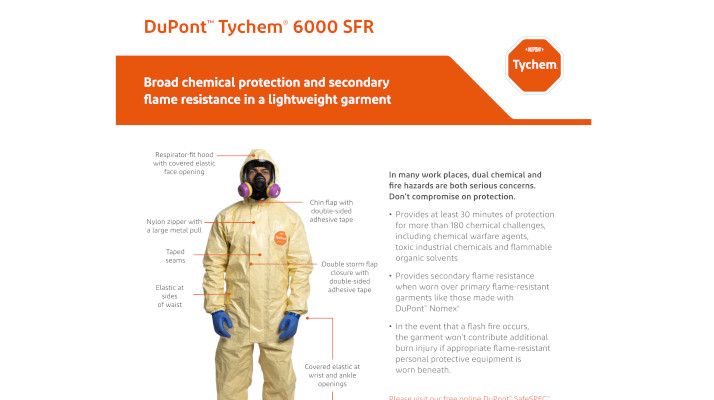



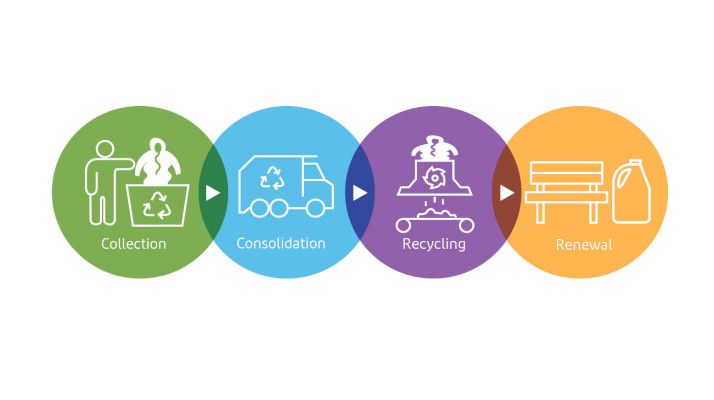
Tyvek® 400 SFR can be recycled through the Tyvek® protective apparel recycling program if not contaminated with hazardous materials.

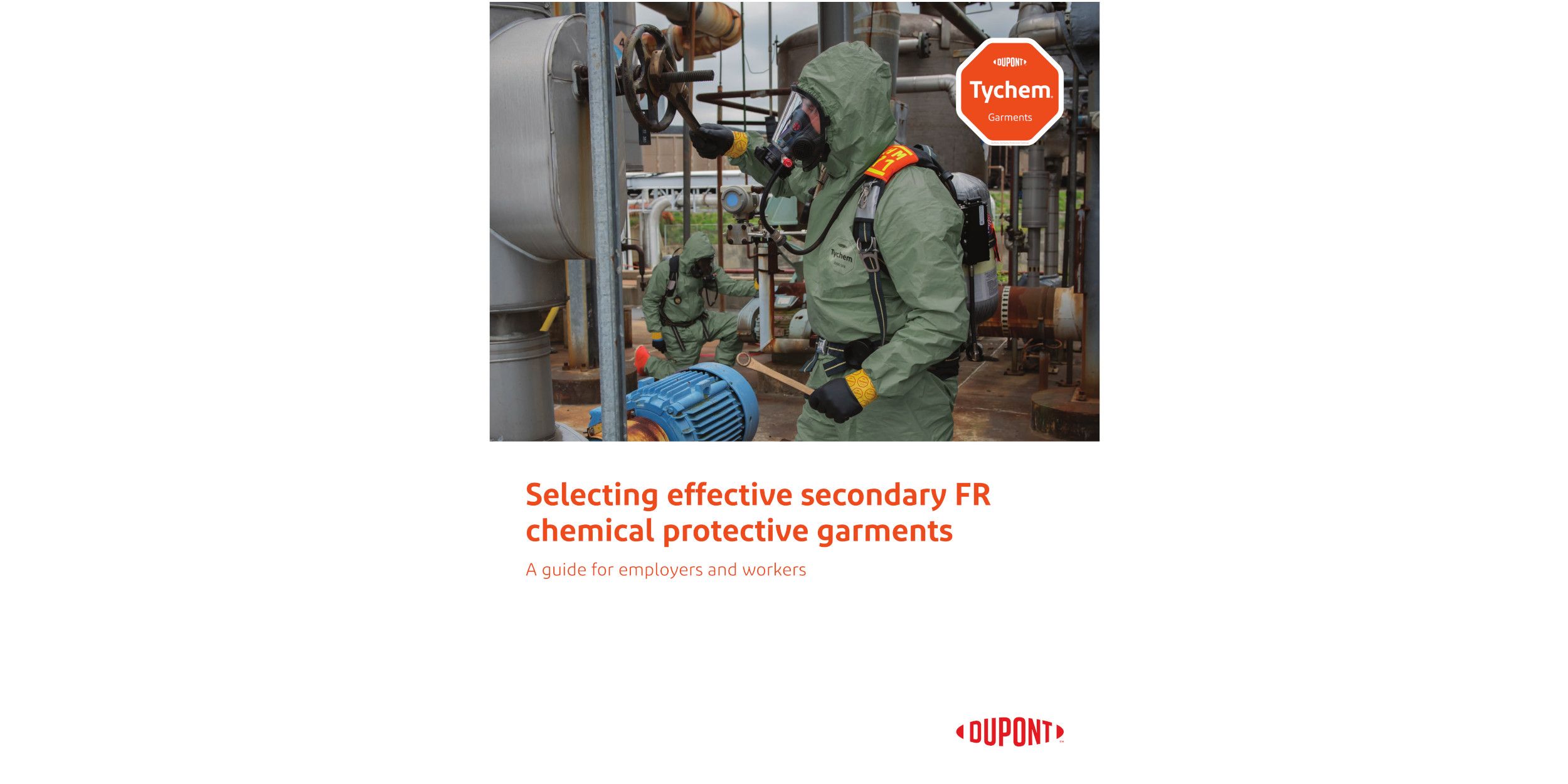
)
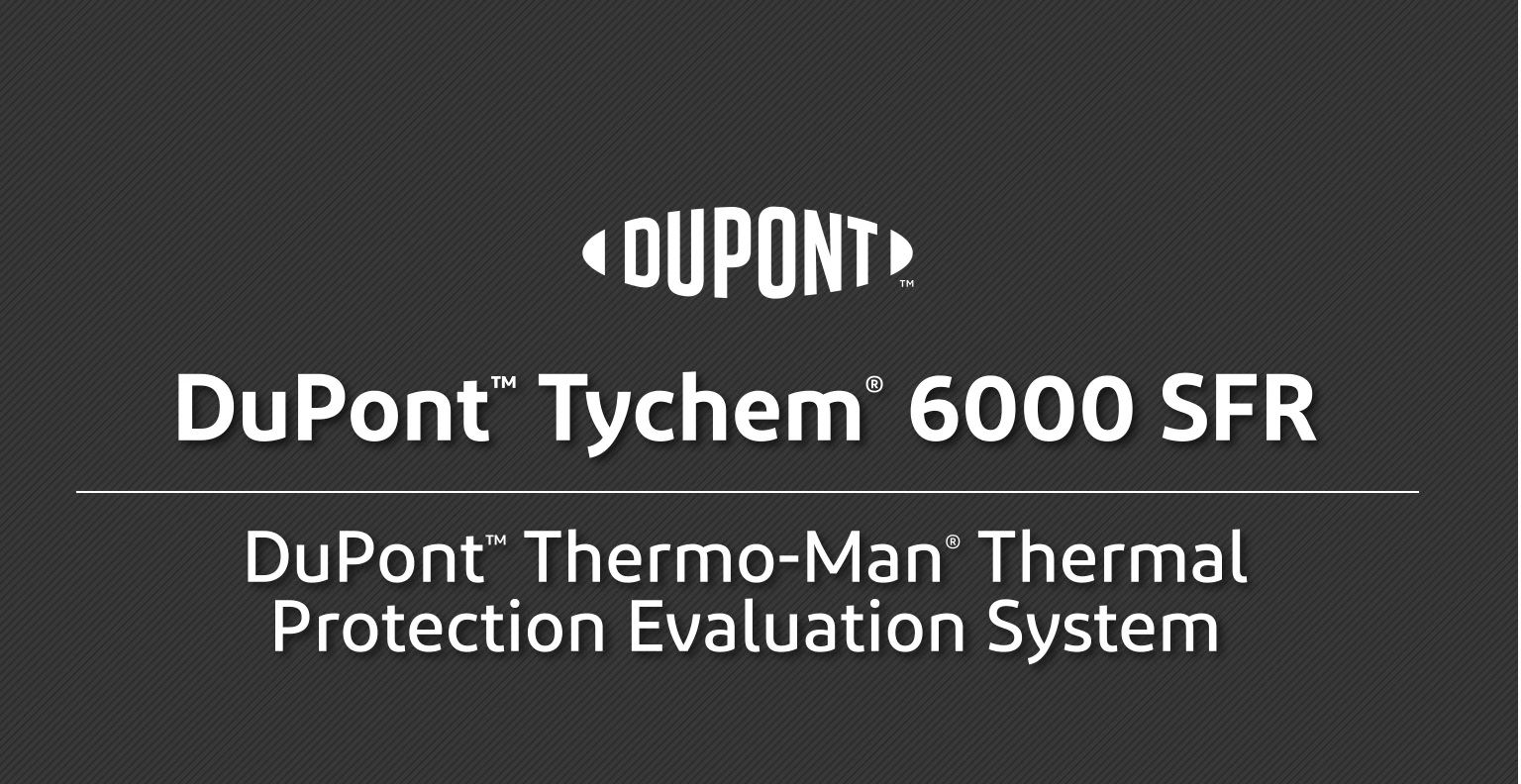
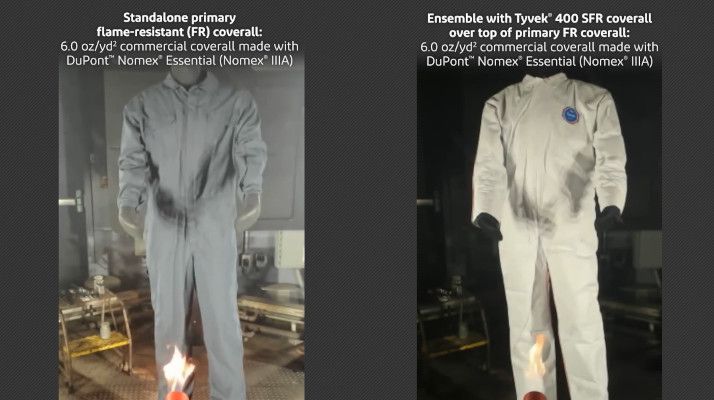
)
)

